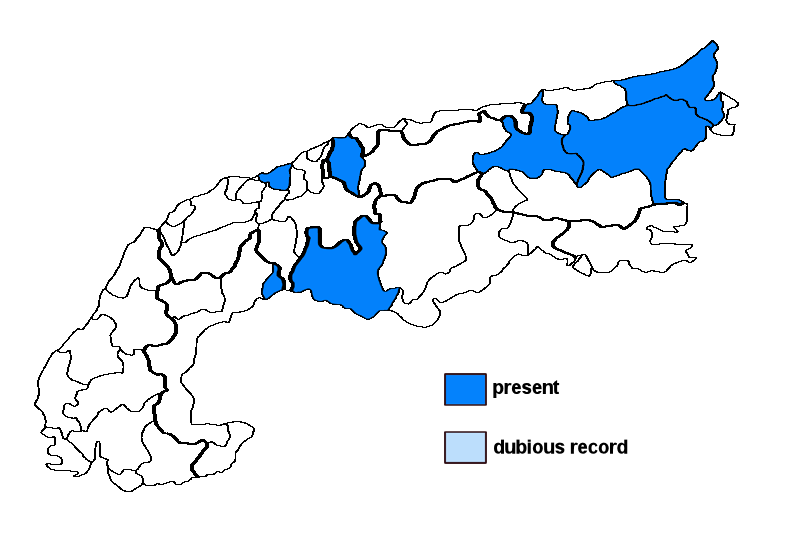Cladonia monomorpha Aptroot, Sipman & Herk
Syn.: Cladonia pyxidata (L.) Hoffm. var. baccifera Räsänen
Lichenised. Poorly known taxon.
Substrate: acidic soil (mostly on siliceous substrata)
Altitudinal range: from the submediterranean/colline belt (potential vegetation: mixed deciduous forests dominated by Quercus and Carpinus) to the alpine belt (potential vegetation: treeless Alpine grasslands and tundras, to the lower limit of perennial snow and the equilibrium line of glaciers)
Note: only recently recognised as a distinct species in the C. pyxidata-group, and perhaps more widespread, this species should be characterised by squamules with narrowly recurved margins, by the presence of discoid, bullate plates on the podetial surface, and by long and sometimes branched proliferations of the scyphus margins supporting the apothecial discs. The species was described from the Netherlands, where it occurs in acid inland sand dunes with the highest terrestrial lichen diversity, and it appears to be widespread in Europe on siliceous rocks and acid sand. According to Ahti (see Nimis 2016) preliminary DNA data from the type locality show that it does not differ from “normal” C. pyxidata, except that C. pyxidata is not uniform at all. However, the type of C. pyxidata, which comes from Italy, is morphologically different.
Austria: Vorarlberg; Salzburg; Steiermark; Niederösterreich (incl. Wien); Switzerland: Schwyz; Italy: Lombardia;





